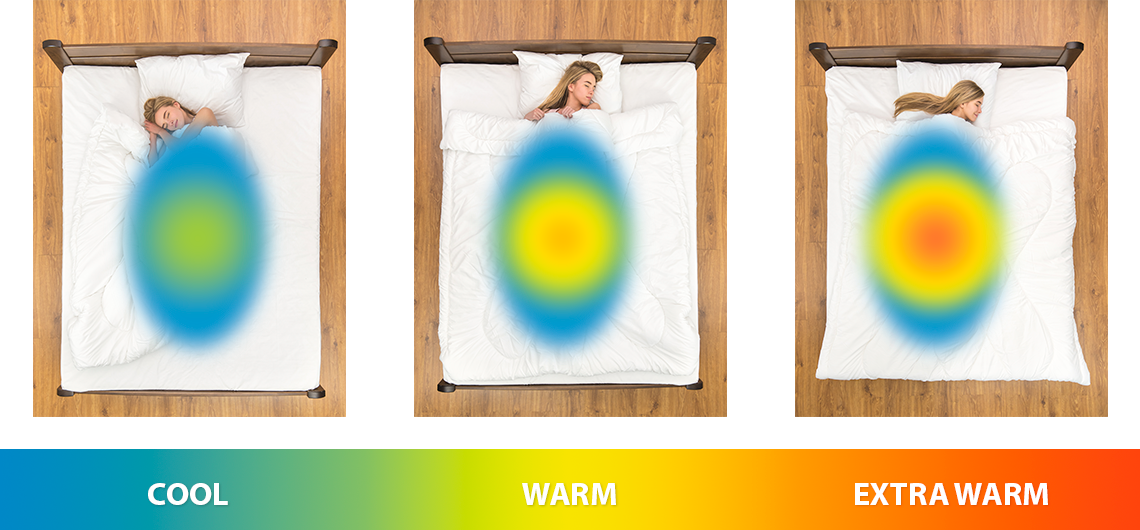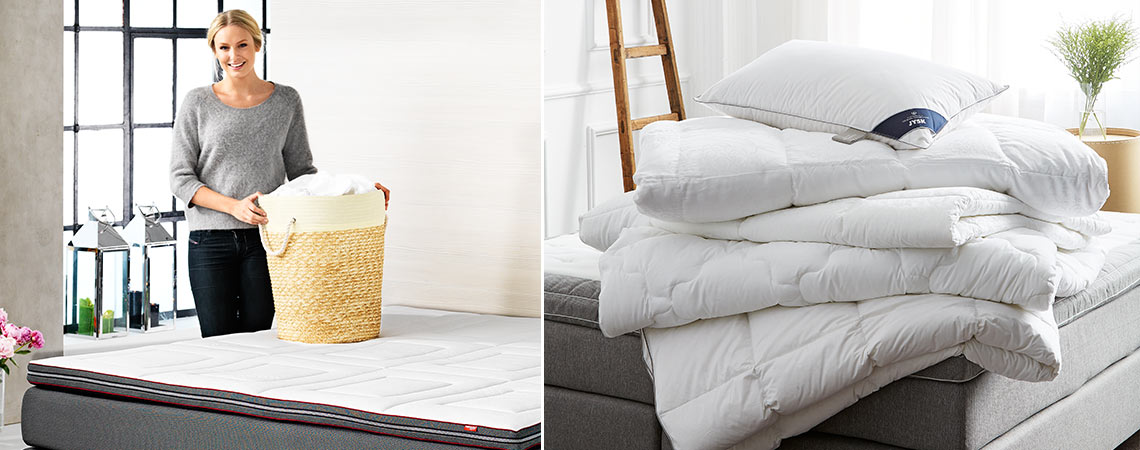How long should your duvets and pillows last?
This depends on their quality and how well you take care of them. We have put together some advice on how to take care of your duvets and pillows so that they last for many years.
- Duvets and pillows should be shaken every day to maintain optimum density and elasticity of the filling.
- Do not vacuum your duvets, as this may damage the filling.
- If you put a blanket over your bed, then pat down your duvet and pillows otherwise moisture will fill the air gaps. To make the filling stand up again you can tumble-dry both your duvet and pillows for a few hours. Consider using a few tennis balls or so-called dryer balls. This will make the filling light and airy again.
Why you should wash your duvet and pillows
When you wash your duvet and pillows it helps extend the lifespan of your bedding pieces. Down and feathers will eventually clump together, and this may cause the duvet to seem thinner and reduce the filling power of the duvet. You can maintain the filling power of the duvet by washing it at least once a year - preferably twice but maximum four times a year. Washing the duvet too often can cause unnecessary wear and tear. We recommend that you wash your pillows twice a year. Wash your duvet and pillows at 60 degrees C, as this gets rid of any dust mites that cannot survive at 60 degrees.
How to wash your duvet and pillow with a natural or fibre filling
Start by setting aside plenty of time for this washing project. It can take 6-8 hours to wash and dry a duvet. In addition, you should always follow the washing instructions on the duvet and pillows.
- Start by checking all of the seams before washing and make sure that there are no holes. Be aware that a duvet can shrink when washed
- Wash your duvet and pillow individually or in a large washing machine
- Use an enzyme-free detergent for duvets and pillows with natural fillings, as ordinary detergent contains enzymes which destroy the abilities of feathers and down by removing their natural fat. A detergent for washing wool will often be suitable. Use your regular detergent for duvets with fibre-fill
- Wash at 60 degrees Celsius and finish with a light centrifugation
- Dry the duvet/pillow in the dryer together with two or three tennis balls or so-called dryer balls. Tennis balls distribute the filling evenly to avoid lumps and to make the duvet/pillow airy
- Remove the duvet from the dryer and shake it around every 15-20 minutes during the drying process. This prevents the feathers and down from clumping together and it avoids burn marks from the dryer
- Let the duvet dry properly before using it again. If you partially dry the duvet/pillow outside, be sure to keep it out of sunlight as it can tenderise the fabric and which can create holes
- When the quilt is dry, we recommend airing it outside or to tumble-dry with cold air in the dryer. This helps to ensure an optimal distribution of feathers and down
- If you want to make sure that the duvet is completely dry you can weigh it before it is washed. After drying you weigh the duvet again. If the duvet weighs more than before, there is still water in it and you should dry it again
How to wash your duvet and pillow with foam or latex
Foam cannot be washed. However, some covers can be washed. If you need to clean a foam pillow, please wipe lightly with a damp cloth. Please do not soak completely and please use a dry cloth to wipe the foam immediately after cleaning.
If you have a pillow with latex filling it can be washed in a full machine and centrifuged at maximum 1000 rpm. Afterwards, it must be tumble dried. The pillow should stay in the cover at all times.
When should you replace your duvet or pillow?
Exactly when you should replace your duvet or pillow can vary a lot. We recommend that you replace your duvet after 5-10 years, depending on wear and tear. However, your pillow only lasts about 2 years, since you wear more on your pillow than your duvet.
Here is some simple advice about how to decide if it is time for a new pillow or duvet:
- If your pillow was white when you bought it and it is now yellow, it can be a sign that it is time for a new one
- If you sweat a lot during the night you should change your pillow and duvet more often
- If your pillow or duvet is still flat and the filling is clumpy after being in the dryer you should change it

- Natural filling
- Fibre filling

